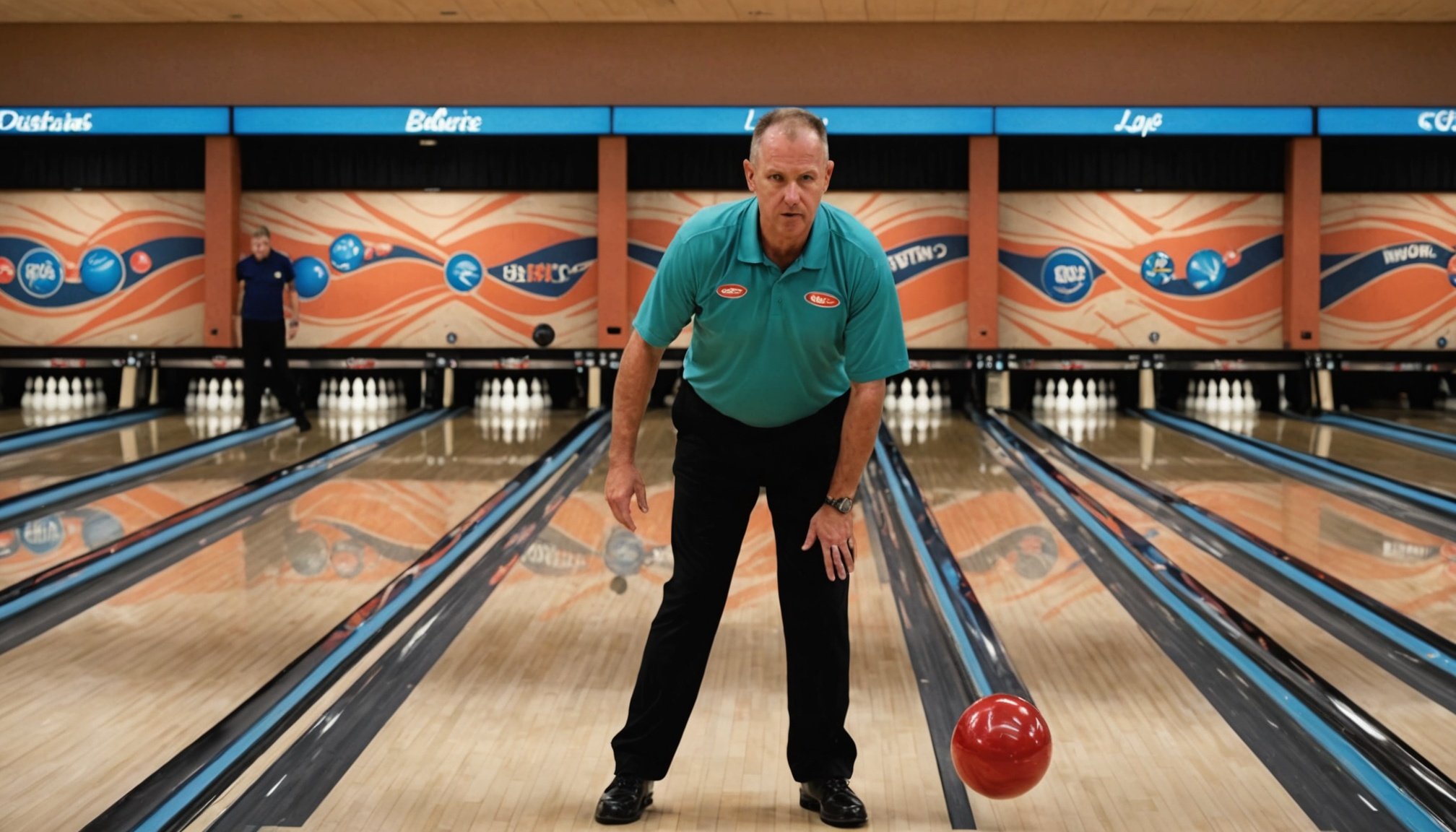Understanding Lane Conditions
Analyzing lane conditions is fundamental to honing one’s advanced bowling techniques. Different lane conditions significantly impact the dynamics of a bowling ball. A significant factor influencing these conditions is the oil pattern. This determines how a ball travels, affecting its trajectory and hook potential. While a heavier concentration of oil extends the ball’s slide, sparse oil encourages early hook and spin.
Temperature and humidity are additional factors that alter lane conditions. As temperature rises, lane surfaces might become more slippery, while high humidity can increase surface friction. Thus, every lane possesses unique characteristics, demanding bowlers to adapt and refine their craft accordingly.
Also read : Unlocking cornering excellence: essential techniques for motocross riders to elevate race performance
The ability to assess and respond to various lane dynamics is pivotal for optimal performance. Seasoned bowlers often rely on thorough lane analysis to tailor their gameplay. This includes examining oil distribution and understanding how environmental factors influence the playing field. An accurate lane assessment equips bowlers with valuable insights, allowing them to adjust techniques effectively—be it altering their footwork, release, or choice of equipment. Efficiently navigating varied lane conditions affords bowlers an edge, elevating their game with precision and foresight.
Technique Adjustments for Varied Conditions
Adapting to varied lane conditions is vital for achieving consistency in performance. Knowing how to modify your approach can dramatically influence your game.
Additional reading : Unlocking Precision: Essential Mental Drills for Biathletes to Enhance Shooting Accuracy
Footwork Modifications
Footwork impacts your overall balance and stability on differing surfaces. Smooth, precise steps can enhance control, particularly on slicker lanes. If the lane has less oil, lighter steps may prevent an early hook, giving you a better shot at precision.
Release Adjustments
Factors like lane oil distribution dictate how to adjust your release. Altering your release point—either earlier or later—can manage spin and hook potential based on the lane’s slickness. Bowling techniques should be flexible to ensure that your release speed complements these adjustments, maintaining optimal ball trajectory.
Aiming Techniques
Aiming effectively requires understanding oil distribution patterns. Adjusting your stance to change the angle of approach can be beneficial. Observations during lane analysis allow for targeted aiming strategies, focusing on minimizing deviation caused by the lane’s variable friction zones.
Mastering these technique adjustments ensures that your skill refinement stays aligned with the lane conditions, empowering you with greater accuracy and control. By continuously honing these tactics, you adapt to any environmental shifts, optimizing your performance for diverse scenarios.
Ball Selection Strategies
Selecting the right bowling balls can be transformative. Key to this is understanding how different ball types react to specific lane conditions. The interplay between a bowling ball’s coverstock—the outer shell—and its core dynamics—the interior design—defines its performance potential. Coverstocks come in various materials like plastic, urethane, resin, or particle additive. Each type affects surface friction and the ball’s hook ability.
Analyzing Coverstock and Core Dynamics
- Plastic balls are best for dry lanes due to their minimal friction, providing a straight trajectory.
- Urethane balls, offering moderate friction, suit medium-oiled lanes.
- Reactive resin balls excel on heavily oiled lanes, enhancing hook potential.
- Particle additives increase grip and are useful in navigating heavy oil patterns.
The core design—symmetrical or asymmetrical—affects the ball’s roll and stability. Symmetrical cores offer more control, while asymmetrical cores deliver varied trajectories and stronger hooks.
Equipment optimization involves aligning these characteristics with one’s technique and the lane environment. Adapting ball selection during gameplay can be critical. Transitioning between ball types as lane conditions shift ensures continued performance consistency, allowing bowlers to maintain an advantage by exploiting each ball’s unique properties effectively.
Practice Routines and Drills
Incorporating effective practice routines and specialized drills into your training regimen is essential for comprehensive skill development. These exercises enable bowlers to finely tune their techniques in preparation for varied lane conditions, providing a competitive edge.
Drills for Lane Adaptation
Drills focused on lane adaptation hone your ability to adjust and thrive under changing conditions. Regular practice in different environments develops agility and precision. For example, experiments with varying starting positions can illuminate how subtle changes affect ball trajectory, offering practical insights into dynamic environments.
Technique Refinement Practices
Technique refinement involves targeted exercises that strengthen specific skills highlighted during lane analysis. Focusing on elements like release consistency or spin control improves overall performance. Dedicated wall drills, for example, can assist in aligning footwork with desired trajectory, refining execution on different lane conditions.
Visualization and Mental Preparation
Developing visualization and mental preparation tactics enhances confidence and focus. Visualization exercises, akin to watching a personal victory reel, fuel your mental game. These practices equip you better to anticipate challenges, manage stresses, and sustain high performance, complementing the expertise honed through physical drills.
By embracing these practice routines, bowlers are empowered with the skill set necessary to adapt and excel in any competitive scenario, ensuring peak performance and strategic adaptability.
Common Challenges and Solutions
In the world of bowling, encountering common bowling issues is a reality, particularly when faced with varied lane conditions. Understanding these challenges and adopting effective troubleshooting strategies are pivotal for performance improvement.
Bowlers often struggle with maintaining consistent ball trajectory on changing surfaces. Adjusting your bowling techniques can mitigate these issues. For instance, on slicker lanes, many bowlers encounter a delayed hook. This can be addressed by adjusting your grip or slightly altering your footwork for better control.
Another frequent challenge is dealing with unexpected lane friction which can disrupt the ball’s path. Developing quick responses to lane analysis—such as selecting a ball with a more appropriate coverstock—can turn potential drawbacks into advantages.
Feedback plays a crucial role in refining techniques. Observing the results of each throw allows for on-the-fly adjustments, a core component of skill refinement. Incorporate a feedback loop into your training, analysing each play to understand what adjustments might be necessary.
Lastly, seek peer reviews or coach guidance to gain insight into subtle errors. This holistic understanding assists in navigating hurdles effectively, widening your array of strategies for successful competition.











